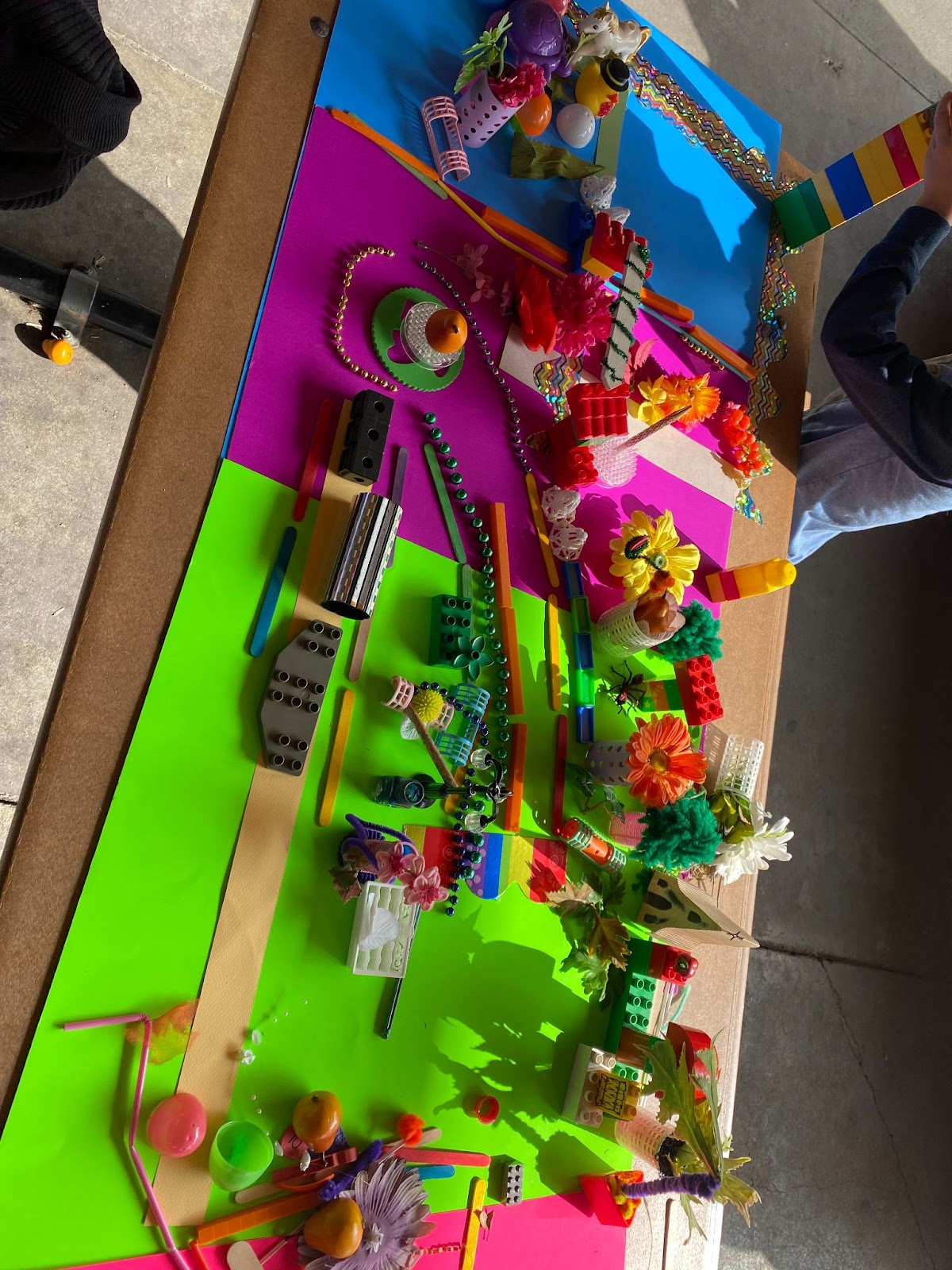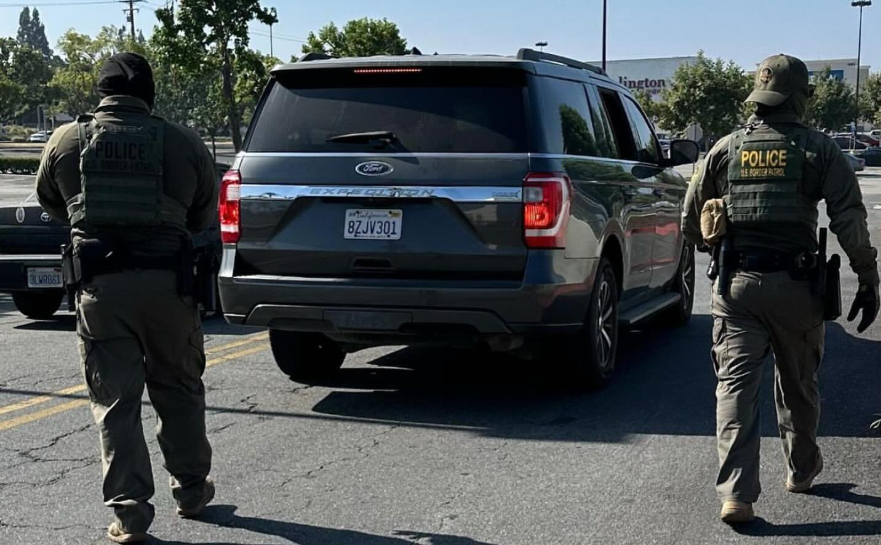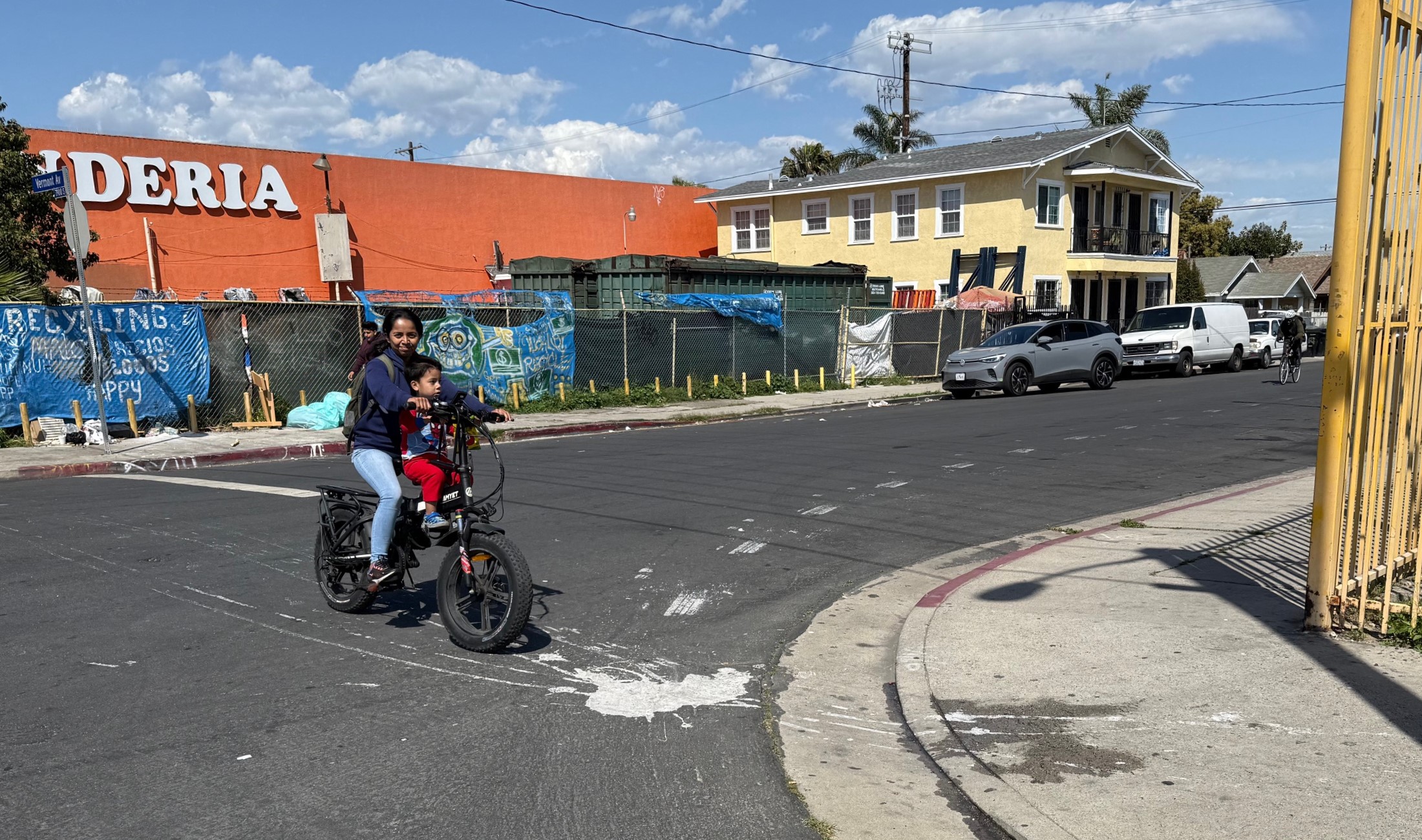Monterey Park and Alhambra’s commercial streets are a physical and mental assault to the human body. People don’t enjoy walking or using public transit on them. The solution to this problem has traditionally been for people to buy bigger cars and these cities widen the roads exacerbating the problem.
The Asian Pacific Islander Forward Movement (APIFM), whose mission is to cultivate healthy, long-lasting, and vibrant Asian and Pacific Islander communities through grassroots organizing, is therefore taking on this issue.
Last Saturday, I facilitated an in-person Place It workshop on redesigning two local, commercial streets (Atlantic Blvd and Garfield Ave) in the San Gabriel Valley. This workshop was planned in partnership with APIFM, and co-sponsored by Henry Lo, council person from Monterey Park, and Sasha Renee Perez, council person from Alhambra. The park was abuzz on Saturday morning, with activities ranging from seniors doing Tai chi to toddlers doing aerobics, helping drive diverse turnout.
The participants in our workshop were Korean, Chinese, Taiwanese, Malaysians, South Asians, Latinos, and a few Caucasians. They ranged in age from 4 to 80 years old. Most spoke English, but a few spoke only Mandarin. Their knowledge of urban planning ranged from "none" to "a little bit." However, this did not stop them from participating and sharing their memories, experiences, needs, and aspirations to redesign the streets.
As an icebreaker and trust-building activity, we had the participants build their favorite childhood memory in 10 minutes. For all our activities, Place It provides a mix of building toys and everyday household objects, encouraging participants to connect with their creative side and imagination. This allows participants to reflect on that happy moment in their lives and rediscover that relationship with people and landscapes. This relationship centers and guides their urban planning experiences.
For this activity, everyone was provided with materials and a sheet of construction paper to build on. Once they were finished with their models, they shared their memory with others with great gusto and to applause. The memories included a lengthy list of outdoor activities, including:
- Going to a favorite park in Alhambra - Almansor Park
- Finding nature in Alhambra (sidewalk plants)
- Living near fields, trees, and open green space in Illinois
- Playing soccer with a parent on tennis courts in Sunnyside Park
- Riding a bike in my Monterey Park Cul-de-sac
- Biking/cycling in India with other children
- Visiting the children’s playground and biking down the hill at Barnes Park
- Going to the library and finding Chinese books
- Going to various parks in the San Gabriel Valley
- Memories of bus stops/stations in Taiwan
Once everyone finished presenting their interesting memories, the group was asked to identify common themes, locations, activities, and people. From these memories from across the globe we were able to pull out core values:
- Social: Family, friends, and community
- Feelings: safe, warm, happy, taking ownership of space, exploration
- Places: outdoors, nature, and parks
Regardless of background, income, gender or profession, language, everyone participated in the activity, which created a level playing field. Most childhood memories took place outdoors and with other people regardless of where people grew up. Participants did not talk about material man-made things, like toys, technology, or buildings.
Participants spoke with strong conviction about their experiences. Their memories evoked sensory experiences of nature, physical activity, and social cohesion. The heartfelt childhood memories expressed deep attachment to people, places, and activities. This echoed the importance of public open space. Everyone realized that our cities are sums of these experiences. The sensory experience, memories, and relationships prepared the participants for the next task to build their ideal public space.
Next, the participants worked in four teams to re-imagine either Garfield Ave. or Atlantic Blvd. These streets are designed as pass-throughs to get people from point A and B with a disregard for human scale or nature. Each team had 15 minutes to work together to build their ideal street on table tops using the found objects. The teams were not given any constraints, so all solutions were welcomed, again, promoting autonomy in the planning process.
The communal nature of this process provided a platform that everyone participated in regardless of typical barriers such as language, age, ethnicity, and professional training. Parents worked side by side with their siblings, while strangers cozied up to one another. Elders were able to connect and share their experiences with younger participants.
Building imaginary streets dioramas with objects actively engaged participants in the design process, rather than leaving it all up to the experts. Participants were able to communicate, illustrate, and negotiate ideas with others that would have been difficult by using existing maps and words alone. In fact, maps would have limited the creative brainstorming process and would have appealed to people who can read maps.
Once the time was up, each team presented their transformations in two minutes to the whole group. Each team identified their members, the problem, and their collective solutions. The model brought the story of their memories, needs, and aspirations to life, not only for the street, but for Alhambra and Monterey Park in general. For many of these participants, it was the first time controlling this kind of space and embedding their behavior patterns to shape the landscape. They used design as a tool to create, plan, and illustrate the tangible and lifelike.
Because of this feeling of accomplishment, each team spoke with conviction and enthusiasm about their scenario. Again, the group listened intently to each of the five team’s scenarios. They laughed, smiled, sighed, and clapped to show their approval and validation.
After each presentation, each team member was asked to pick a year, date, time, and activity in the future. This helps them visualize their future to make these changes happen.
The team’s created different futures for the roads based on their expertise, needs, and desires. Some teams' focus was on improving existing conditions, while others focused on big ideas. Below is a summary of the team solutions.
GROUP 1
- Using lanes to display nature and provide more walking space and lights
- More light at night around parks and along streets
- Places to rest (ample amount of public seating)
- Ample number of public bathrooms
- If there needs to be dedicated car lanes, there will be one lane of traffic each way
- Art on crosswalks, which help pedestrians enjoy walking
- Creating a more inviting and relaxing environment for pedestrians
- Ample number of public drinking fountains
GROUP 2
- Bike tunnels underneath the 10 freeway
- Plants along streets and sidewalks to beautify neighborhood/walking spaces
- Protected bike lanes and creating better connectivity between bike paths
- Developing community garden - open to the public anytime
GROUP 3
- Spacious, dedicated biking and skating lanes
- Safe place for people to walk
- Family-friendly destinations, like book stores and other small businesses
- Safer places to walk (less cars)
- More convenient ways to move around
- More infrastructure that is centered around people, not cars (ex. barricades along big streets around businesses, which make it inconvenient for pedestrians and local residents)
GROUP 4
- Road diet → take away one lane from each direction and utilize space as a parklet or outdoor eating space
- Walk/bike bridge that goes over freeway pass and makes it safer for pedestrians and bikers to cross through the area
- Prioritizing safety for pedestrians is key
- Better connectivity with regional areas → while shuttle systems are good, they can be more efficient if they connected to regional areas around Alhambra and Monterey Park
- Amplifying local businesses so that people don’t just see Alhambra and Monterey Park as thoroughfares
GROUP 5 (family) Wesley Reutimann from Active San Gabriel Valley and his sons, ages 6 and 3, built this model
- City through a child’s perspective
- Lots of nature around and greenery
- Wildlife area in the corner with lots of trees/plants
- Protected walking and biking trails - tree/plant lined bike paths
- LED lights which light up sidewalks and walking trails for pedestrians
While the teams developed dozens of solutions, their collective values began to emerge. Once all teams presented, the group was asked once again to state the common themes and transformations.
- Pedestrian and bike-friendly infrastructure
- More nature and greenery
- Relaxing streets (can use art to create more walkable areas)
- Protected bike lanes
- Social interactions
All the teams transformed the anonymous street into a center of their public life by narrowing down or reconfiguring the roadway. This slows down the speed and reduces noise from cars.
By adding trees, plants, public community gardens, drinking fountains, outdoor spaces, restrooms, shade, bike lanes, improved public transit and destinations the street becomes a community hub. Their ideas varied. Some solutions were fantastical, others were things we could implement tomorrow. These interventions make the street tailorable for humans and nature.
Conclusion
For many, visioning workshops changed their perception and attitudes toward urban planning and street design. A Chinese man with two young twin boys thanked me for teaching him and his sons about urban planning.
The community realized they are stronger together after bringing together the diverse backgrounds, experiences, and perspectives of the team members. The creative and reflective activities broke down barriers and forged new relations by allowing for the sharing of personal knowledge and aspirations.
Bringing the community together for one hour to share their stories and aspirations was a healing experience that reinforced social cohesion, uplifted intuitive knowledge, and encouraged self-determination. Rather than a linear process of soliciting input to inform a planning procedure, participants arrived, through transactions and interactions, at values that embody multiple perspectives.
Participants went beyond talking about problems, instead designing ideas focused on building solutions. With this personal and intuitive knowledge, we developed meaningful community input to begin the creation of healthy and sustainable Monterey Park and Alhambra.
Great cities and places are created not only from brick and mortar, but the narratives people bring into these spaces. By listening and documenting residents and stakeholder stories and experiences, we can develop a plan that is rooted in their lived experiences and aspirations. These aspirations will live far beyond the workshop but linger in collective imagination. Every participant realized that they can become their own advocate for these transformations.
SBLA San Gabriel Valley coverage, including this article and SGV Connect, is supported by Foothill Transit, offering car-free travel throughout the San Gabriel Valley with connections to the new Gold Line Stations across the Foothills and Commuter Express lines traveling into the heart of downtown L.A. To plan your trip, visit Foothill Transit. “Foothill Transit. Going Good Places.”
Sign-up for our SGV Connect Newsletter, coming to your inbox on Fridays.







